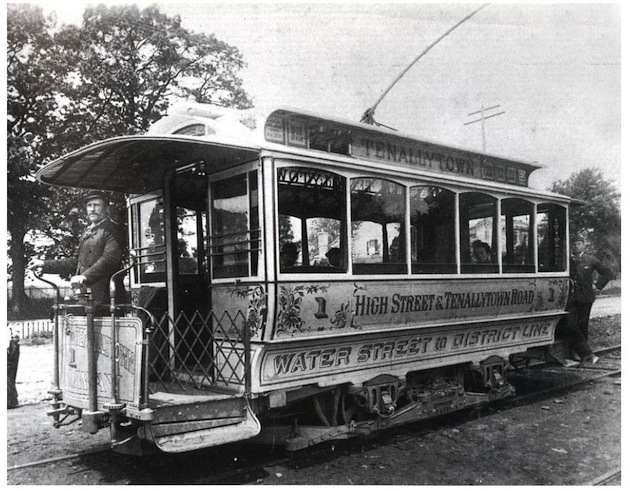Welcome to Glover Park History | Glover Park History (original) (raw)
Other Resources
- Aerial Map of Washington, 1922
- Bygone Brookland
- DC History Resources
- Ghosts of DC
- Glover Park Citizen’s Association
- Historical Data on DC Buildings
- Streets of Washington
- Tenleytown History
- Washington Chronicles
- Washington Directory, 1858
Introduction
A variety of resources, such as censuses, directories, land deeds, newspaper archives, church records, etc., make it possible to link names and places to moments in time. It is by way of Georgetown tax assessments, for example, that we know that, in about 1808, Peter Colter, a German immigrant, and Murray Barker, a free black man, were the earliest settlers of what is now Glover Park; and that the 2100 block of Wisconsin Avenue, where their houses once stood, fell within the municipal boundaries of the city of Georgetown, which formerly reached as far north as what is now the Russian Embassy.
A comparison of old and new maps shows that, before residential neighborhoods were developed, the northern extension of Georgetown, and the surrounding area once known as Georgetown Heights, were still primarily agricultural.
The earliest institution of the neighborhood was the Georgetown Poorhouse, which stood just east of what is now Guy Mason Recreation Center, and was in operation from 1832 to 1875; after which it became the Industrial Home School, which closed in 1954.

The Poor and Work House of Georgetown. (“Roadside Sketches”, Evening Star, August 15, 1891)
The oldest surviving institution is Holy Rood Cemetery, which also dates to 1832. The last resting place for seven thousand white and black Catholics of Georgetown, Holy Rood includes the best-documented slave burial ground in the District of Columbia, and the grave of Joseph Nevitt, a Minuteman of the American Revolution.
Holy Rood Cemetery in 1950. (Historical Society of Washington)
During the Civil War the Signal Corps trained on the heights overlooking Georgetown; Northern women founded the Colored Home and the Industrial Home School; and the earliest known photographs of the neighborhood were taken.
The Signal Camp of Instruction, 1861. The photographer appears to have set up his camera north and west of the present intersection of Calvert Street and Tunlaw Road. In the distance beyond the encampment the landmarks include Trinity Church Upper Burial Ground, Back Street, and The Cedars––corresponding to the present Holy Rood Cemetery, Tunlaw Road, and Duke Ellington High School. (Miller’s Photographic History of the Civil War , 1911)
“The Signal Camp of Instruction, Red Hill, Georgetown, D.C.” The prominent house in the distance is Richard S. Cox’s “Burleith”, and to its right, farther away, Georgetown College. (U.S. Army Heritage and Education Center at Carlisle Barracks)
Images of the military activity on the heights overlooking Georgetown reveal the open look of the land in the 19th century, when the neighborhood was dominated by the operations of a syndicate of master butchers, the suppliers of meat to the markets of Georgetown and of Washington City, who accumulated most of the land that was to become Glover Park.
After the Civil War the butcher’s syndicate of Georgetown had to adjust to changes in their industry. As more livestock was arriving, by rail, on the other side of the city, the cattle market, stock pens, and slaughterhouses on this side of the city became increasingly irrelevant. At the same time, suburban land tracts on the periphery of the former cities of Washington and Georgetown, formerly devoted to agricultural use, were beginning to be developed for residential use. The butchers owned a considerable amount of open land at the northern end of Georgetown, and its increased value, once they ceased conducting their operations on it, and freed it for other use, was obvious to them.
Joseph T. Kengla and family, circa 1881. Kengla, a dealer in beef, lamb, veal and mutton, lived at about 2320 Wisconsin Avenue, where the Sheffield Condominium is today. (Photo courtesy of a descendant.)
Joseph Weaver, Jacob H. Kengla, and Benjamin F. Hunt, who were among the most prosperous of the Georgetown butchers, took steps to enhance the residential potential of their real estate by incorporating a streetcar line between Georgetown and Tenleytown.
The Georgetown & Tenallytown Street Railway, circa 1890, on what is now Wisconsin Avenue. (Photo courtesy of Michael C. Copperthite.)
Much of the present neighborhood was acquired in 1907 by the banker Charles Carroll Glover from the estate of Henry Kengla, and the earliest advertisements to use the name Glover Park were placed in 1926.
Charles Carroll Glover (1846-1936), President of Riggs Bank.
This project has been generously supported by District of Columbia Advisory Neighborhood Commission 3B.
My thanks to Commissioners Brian Cohen and Mary C. Young, and to Danna McCormick, of DLM Web Development.
I have benefitted from the generosity of many historians, and am indebted to the patience and resourcefulness of many archivists and reference librarians, and in particular, to those of the Washingtoniana Division of Martin Luther King Library.
This work is dedicated to the memory of Robert W. Lyle (1922-1996) of the Peabody Room of the Georgetown Branch Library, who first guided me to the records of the part of Georgetown that is now in Glover Park.
Carlton Fletcher





